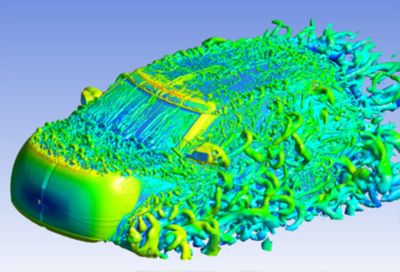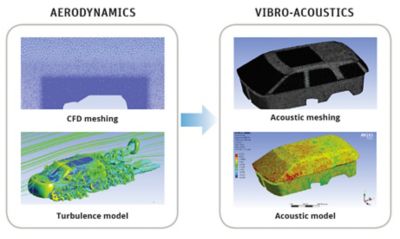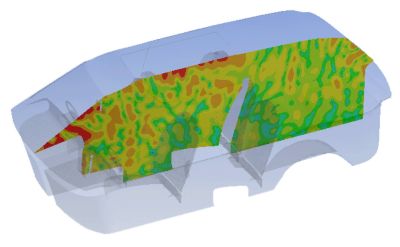-
-
学生向け無料ソフトウェアにアクセス
Ansysは次世代の技術者を支援します
学生は、世界クラスのシミュレーションソフトウェアに無料でアクセスできます。
-
今すぐAnsysに接続!
未来をデザインする
Ansysに接続して、シミュレーションが次のブレークスルーにどのように貢献できるかを確認してください。
国および地域
無料トライアル
製品およびサービス
リソースとトレーニング
当社について
Back
製品およびサービス
ANSYS BLOG
May 25, 2018
Multiphysics Simulation Reduces Automotive Noise
You are having a discussion with your passenger while driving and you raise your voice to be heard as the car goes faster. Or, you pull onto the on-ramp of the highway and instinctively turn up the volume on the car stereo (that is, if you don’t have a car stereo that’s programmed to increase the volume as your speed increases to overcome the ambient noise). So, you may not be surprised to learn that J.D. Power lists high levels of automotive noise as one of the most commonly reported problems. To tackle this challenge and design quieter rides, engineers at Corning use Ansys multiphysics simulation software.
There are several causes of automotive noise. When wind hits exterior surfaces, noise is transmitted via the automobile’s components to the inside of the cabin. This is known as flanking noise and is the primary cause of automotive noise at highway speeds. Turbulent air flowing around the vehicle causes the windshield and windows to vibrate, and the tires contacting the road and other mechanical noises related to the automobile’s operation (e.g., the engine) also contribute to the overall noisiness of an automobile.

Quieting the Ride
Corning’s engineers wanted to determine which glass surfaces caused the least automotive noise and if lightweight glass would make a difference. They used Ansys software for aerodynamics and vibro-acoustics simulation to analyze the effects of sound transmission through the glass on the front portion of the car at 30, 60 and 80 mph. Using multiphysics simulation, they virtually modified the designs of the front windshield and front side windows, as well as the type of glass, and succeeded in lowering the level of noise. Based on this process, Corning’s engineers hope to increase their design and testing efficiency by 30 to 50 percent.

Decreasing automotive noise is essential for increasing customer satisfaction and safety. Corning is using Ansys multiphysics technology to improve its design process in a cost-effective manner resulting in a competitive edge and shorter time to market for its improved designs..

Learn more in the article A Window into Automotive Noise in the latest issue of Ansys Advantage magazine.